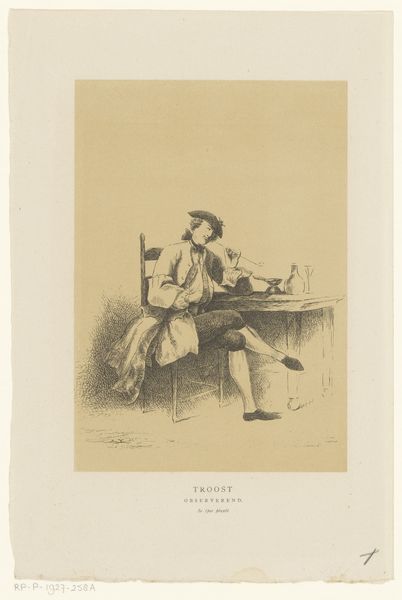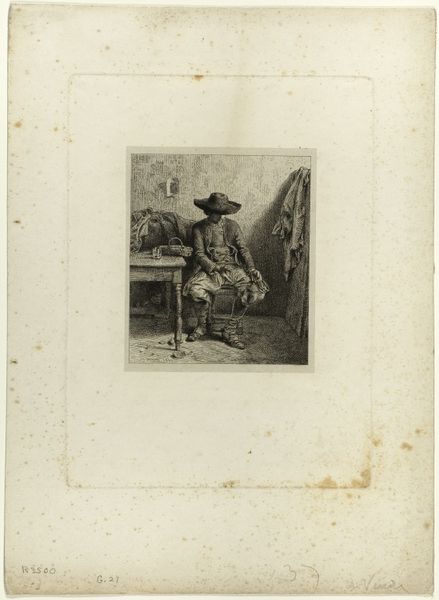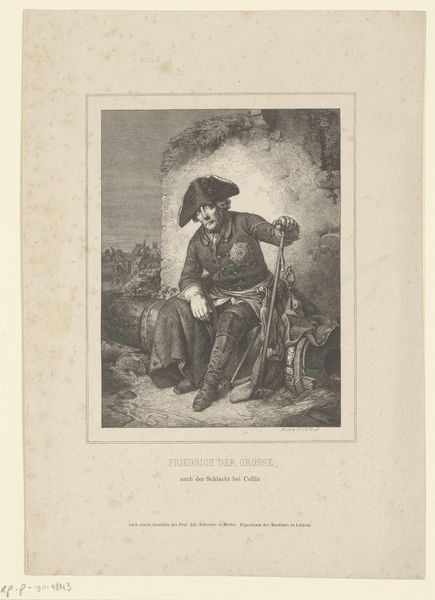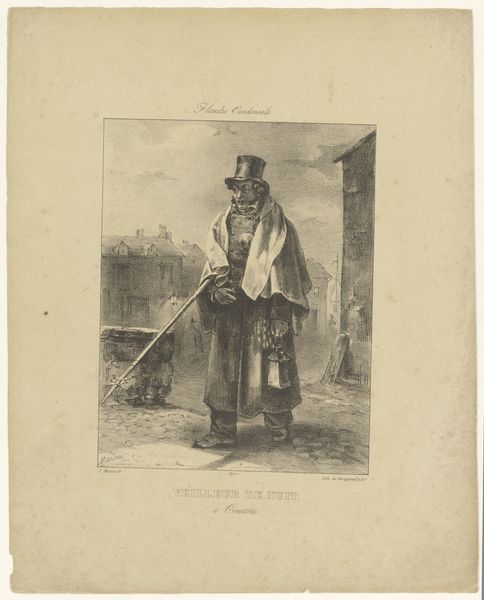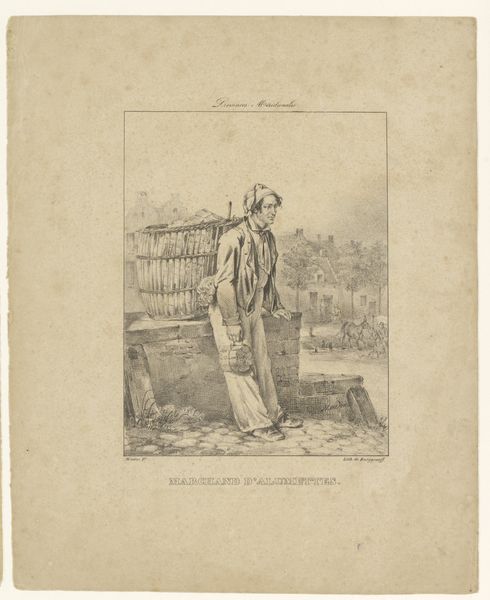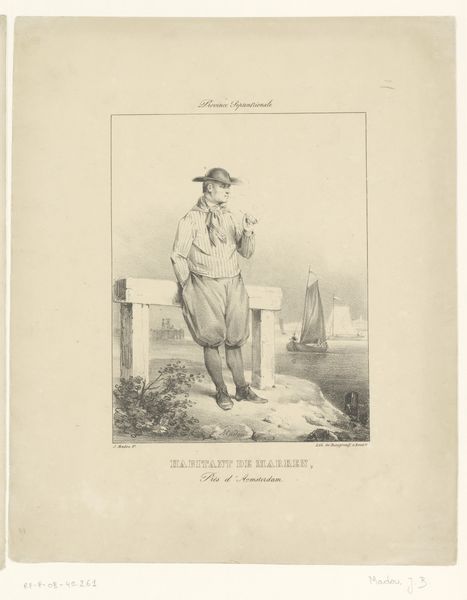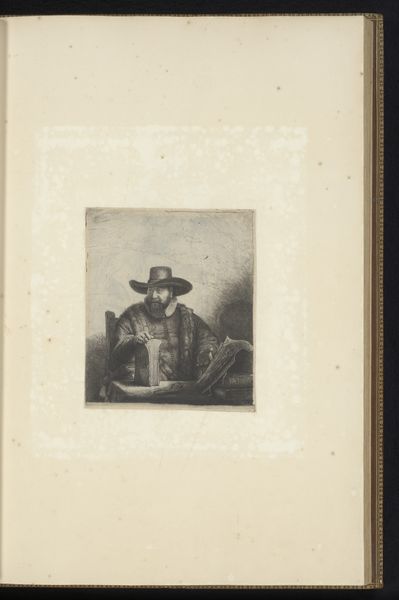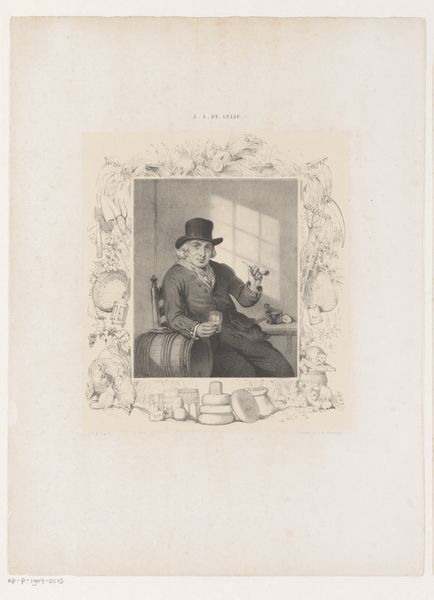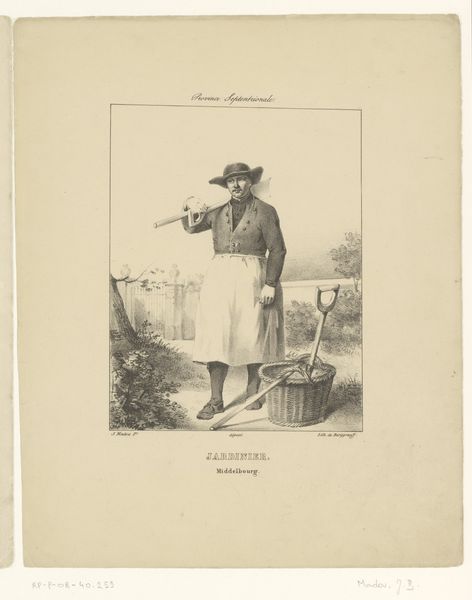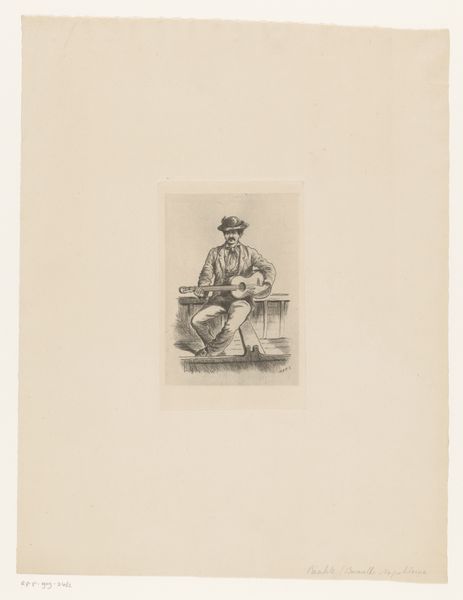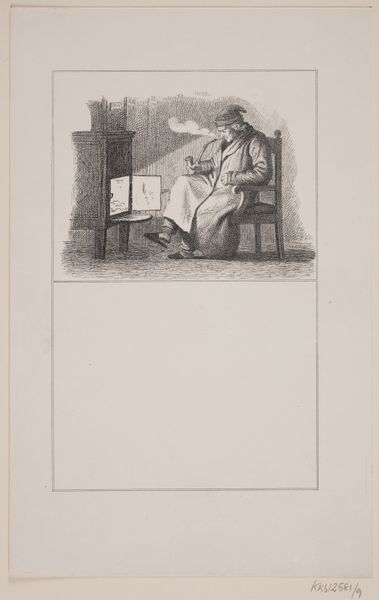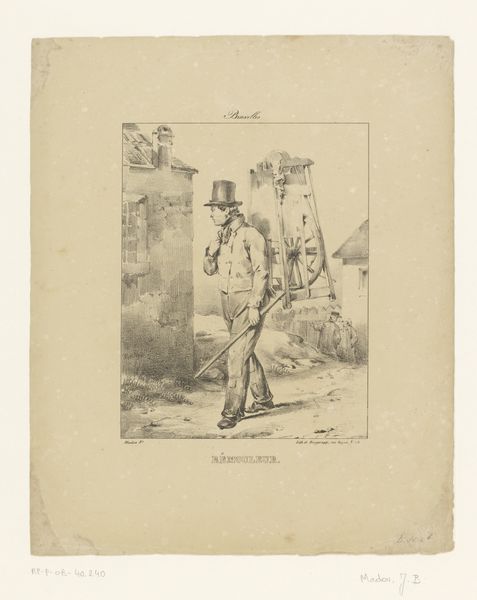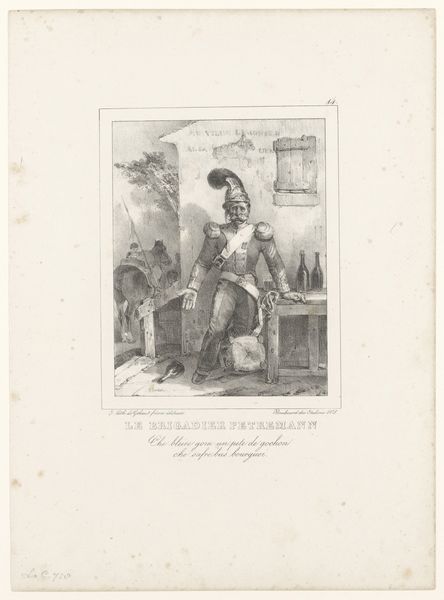
Interieur met een pijprokende man uit de omgeving van Dordrecht 1825 - 1835
0:00
0:00
jeanbaptistemadou
Rijksmuseum
print, etching
#
portrait
# print
#
etching
#
romanticism
#
genre-painting
Dimensions: height 342 mm, width 278 mm
Copyright: Rijks Museum: Open Domain
Editor: We’re looking at "Interior with a Man Smoking a Pipe from the Surroundings of Dordrecht," an etching by Jean-Baptiste Madou, made sometime between 1825 and 1835. The scene feels very intimate. The man, seemingly working-class based on his dress, occupies a modest interior. It's a slice-of-life image, I suppose. What's your take on this, especially considering the period? Curator: This work is a great example of the rise of genre painting and its relationship to burgeoning national identities. In the Romantic era, there was increasing interest in depictions of everyday life, particularly the lives of "common" people. How does the artist’s choice to focus on such a seemingly mundane subject elevate it, in your opinion? Editor: I guess it feels somewhat… respectful? Like it’s dignifying this man's existence through art. Is it intended to make a larger point? Curator: Precisely. These kinds of images gained popularity as national identities were forming and consolidating. Representations like this weren't just neutral depictions; they contributed to the construction of a national "character" – an idealized, romanticized version, often. What social values or class dynamics might this portrayal be subtly reinforcing? Editor: I see. Maybe there's an implication that even the simplest person, relaxing with a pipe, contributes to the broader culture or even Dutch identity. The “common man” made worthy of art. But maybe it glosses over some of the harder realities of the time for people of his social class. Curator: Exactly! It highlights the power of images to both reflect and shape social perceptions. This piece, presented in the Rijksmuseum, is less a snapshot of actual reality and more a curated representation intended to promote cultural unity. What does this imply for the modern viewer of such art? Editor: So, looking at this today, we need to be aware of how such seemingly straightforward depictions helped form national narratives back then. It is a good thing to keep in mind the context when facing historical images in museum environments. Curator: Absolutely. Recognizing the social and political work performed by seemingly simple genre paintings helps us to understand how art functions in the broader sphere.
Comments
No comments
Be the first to comment and join the conversation on the ultimate creative platform.
